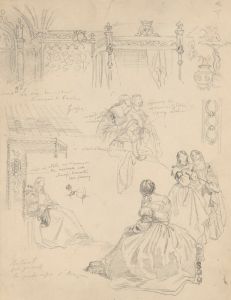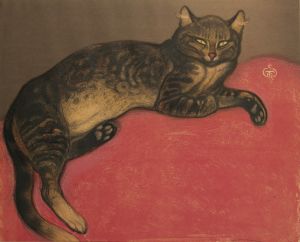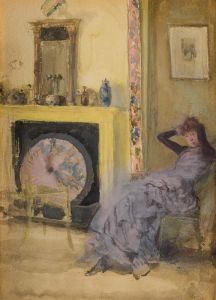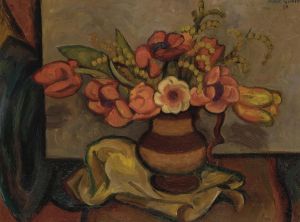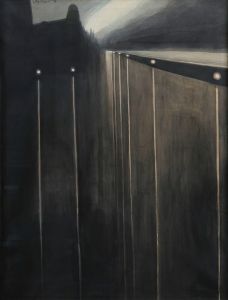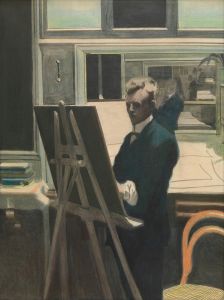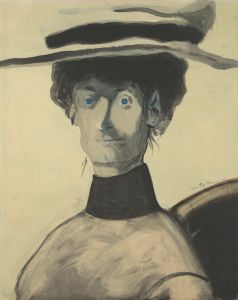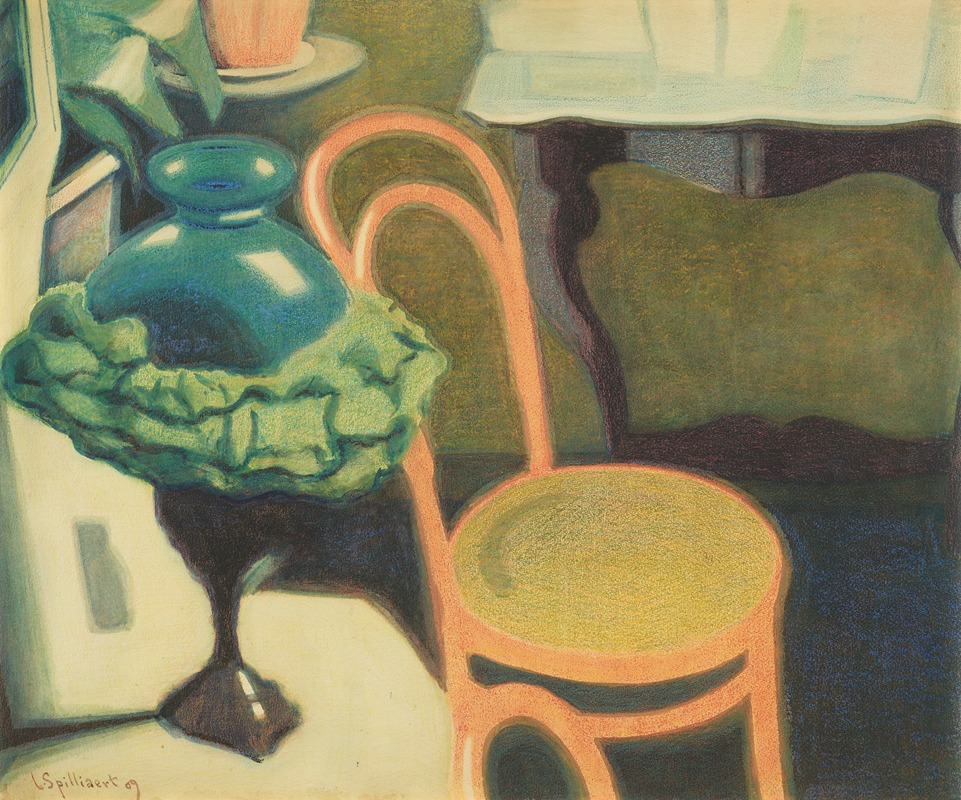
Interieur met stoel en opaline lamp
A hand-painted replica of Léon Spilliaert’s masterpiece Interieur met stoel en opaline lamp, meticulously crafted by professional artists to capture the true essence of the original. Each piece is created with museum-quality canvas and rare mineral pigments, carefully painted by experienced artists with delicate brushstrokes and rich, layered colors to perfectly recreate the texture of the original artwork. Unlike machine-printed reproductions, this hand-painted version brings the painting to life, infused with the artist’s emotions and skill in every stroke. Whether for personal collection or home decoration, it instantly elevates the artistic atmosphere of any space.
Léon Spilliaert, a Belgian symbolist painter, is known for his unique and introspective works that often explore themes of solitude and introspection. One of his notable paintings, "Interieur met stoel en opaline lamp" (translated as "Interior with Chair and Opaline Lamp"), exemplifies his distinctive style and thematic focus.
Created in 1909, this painting is a part of Spilliaert's exploration of interior spaces, a recurring subject in his oeuvre. The work captures a quiet, contemplative scene, featuring a solitary chair and an opaline lamp, elements that Spilliaert often used to evoke a sense of stillness and introspection. The composition is marked by its simplicity and the subtle interplay of light and shadow, which are characteristic of Spilliaert's work.
Spilliaert's use of color in "Interieur met stoel en opaline lamp" is restrained yet effective. The muted palette, dominated by shades of gray, brown, and the soft glow of the opaline lamp, creates a somber and reflective atmosphere. This use of color and light not only highlights the objects within the room but also enhances the emotional depth of the scene, inviting viewers to ponder the quietude and isolation depicted.
The painting reflects Spilliaert's interest in the psychological and emotional dimensions of space. The empty chair and the softly glowing lamp suggest an absence, a theme that Spilliaert frequently explored in his work. This absence can be interpreted as a metaphor for solitude or introspection, common themes in Spilliaert's art, which often reflect his own introspective nature and existential musings.
Spilliaert's technique in this painting, as in many of his works, involves a delicate balance between line and form. His precise and deliberate use of line defines the contours of the chair and lamp, while the soft, almost ethereal application of color imbues the scene with a dreamlike quality. This combination of line and color is a hallmark of Spilliaert's style, contributing to the haunting and enigmatic quality of his interiors.
"Interieur met stoel en opaline lamp" is also notable for its composition. The placement of the chair and lamp within the space creates a sense of balance and harmony, yet the emptiness of the room leaves a lingering sense of unease. This tension between harmony and emptiness is a key element of Spilliaert's work, reflecting his fascination with the dualities of presence and absence, light and shadow, and the material and the spiritual.
Léon Spilliaert's work, including "Interieur met stoel en opaline lamp," has been recognized for its contribution to the Symbolist movement and its influence on modern art. His ability to convey complex emotional and psychological states through simple, yet evocative compositions has earned him a place among the notable artists of his time. Today, Spilliaert's paintings are appreciated for their introspective beauty and their ability to capture the quiet, often unsettling, moments of everyday life.
In summary, "Interieur met stoel en opaline lamp" is a quintessential example of Léon Spilliaert's artistic vision. Through his masterful use of light, color, and composition, Spilliaert creates a scene that is both serene and thought-provoking, inviting viewers to explore the depths of solitude and introspection.





